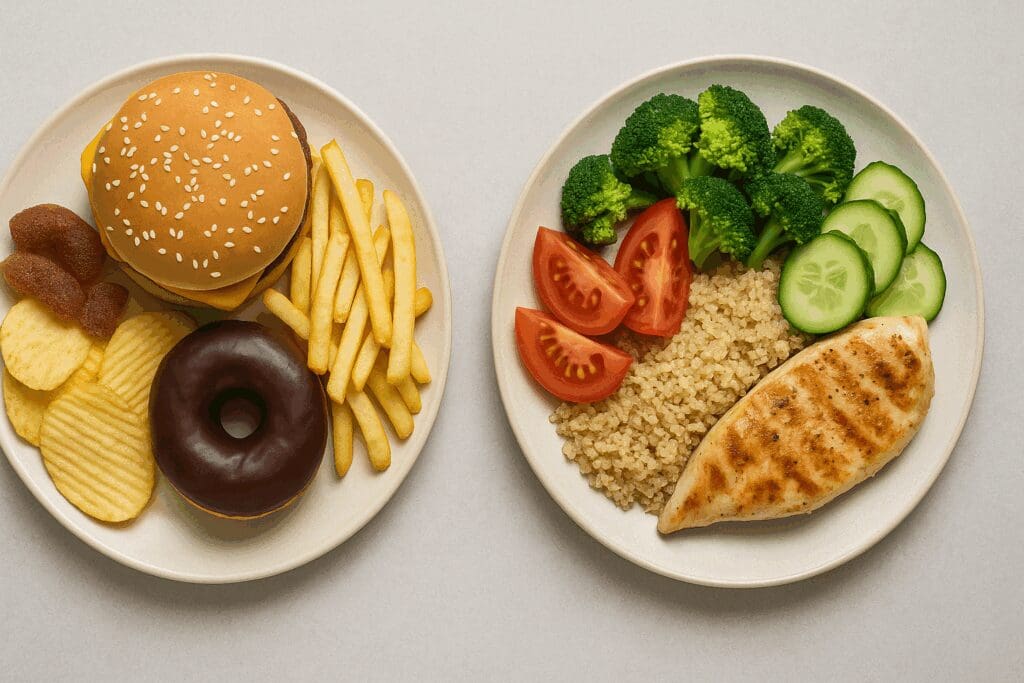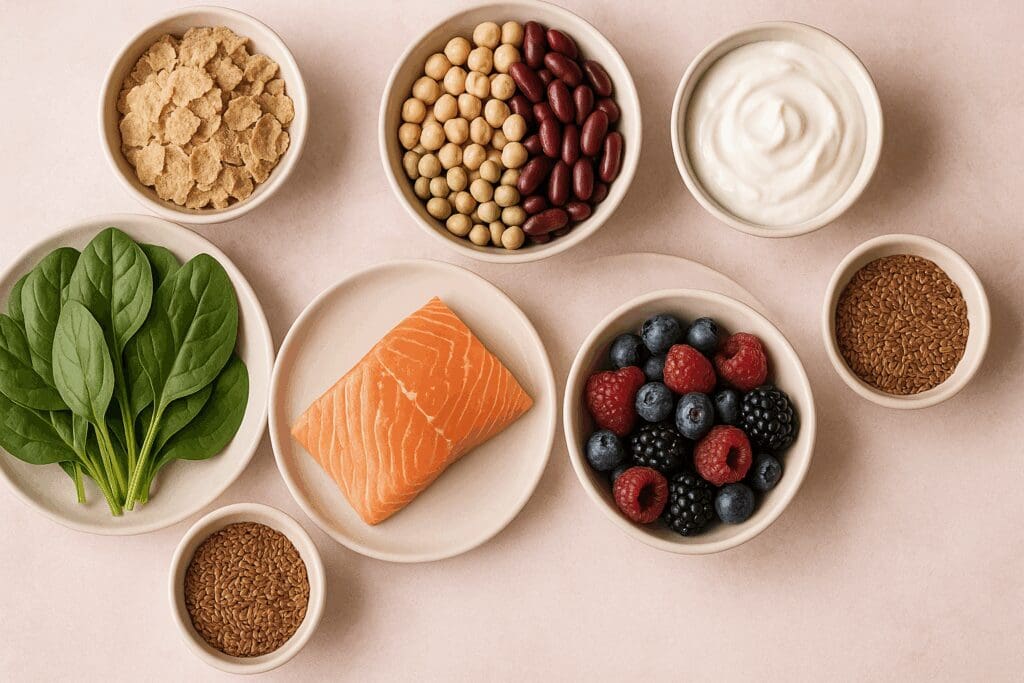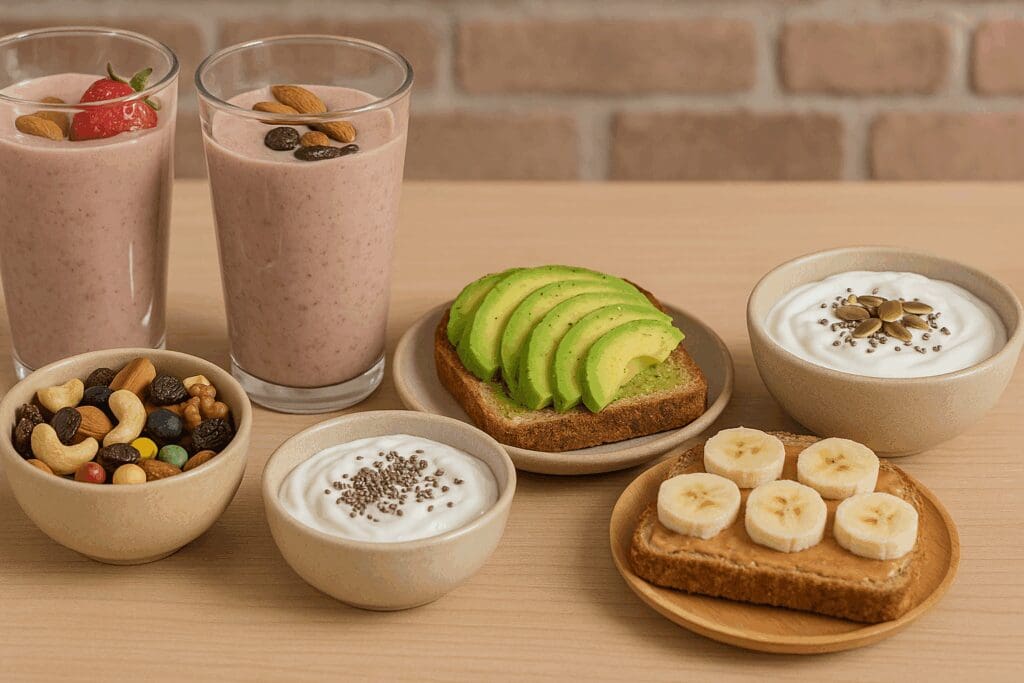Maintaining a regular diet is not merely about adhering to a meal schedule; it encompasses a consistent pattern of consuming balanced, nutrient-rich foods that support overall well-being. In today’s fast-paced world, where irregular eating habits and processed foods are commonplace, establishing a regular diet becomes paramount for achieving long-term health and nutritional balance. This article delves into the multifaceted advantages of a regular diet, exploring its impact on physical health, mental clarity, and overall quality of life.
You may also like: 10 Essential Tips on Choosing Healthy Food for Ladies to Boost Energy and Wellness

Understanding the Essence of a Regular Diet
A regular diet refers to a structured eating pattern that includes consuming meals at consistent times, incorporating a variety of food groups to meet nutritional needs. This approach ensures that the body receives a steady supply of essential nutrients, aiding in optimal physiological functions. Unlike sporadic eating habits, a regular diet fosters metabolic stability, supports digestive health, and contributes to sustained energy levels throughout the day.
The Role of a Balanced Diet in Sustaining Health
A balanced diet is integral to a regular eating regimen, emphasizing the inclusion of diverse food groups such as fruits, vegetables, whole grains, lean proteins, and healthy fats. This variety ensures the intake of essential vitamins, minerals, and other nutrients necessary for bodily functions. For instance, incorporating leafy greens provides vital antioxidants, while whole grains offer dietary fiber crucial for digestive health. By maintaining a balanced diet, individuals can prevent nutrient deficiencies and reduce the risk of chronic diseases.

Clean Eating Diet: A Pathway to Nutritional Excellence
Embracing a clean eating diet complements the principles of a regular diet by focusing on whole, minimally processed foods. This approach encourages the consumption of natural foods free from additives and preservatives, thereby enhancing nutrient intake and reducing exposure to harmful substances. For example, choosing fresh fruits over sugary snacks not only satisfies sweet cravings but also provides essential vitamins and fiber. Adopting clean eating habits contributes to improved digestion, better energy levels, and overall health.
Incorporating Diet Food for Optimal Wellness
Integrating diet food into daily meals involves selecting nutrient-dense options that support health goals without compromising on taste. Foods such as quinoa, salmon, and legumes are rich in proteins and healthy fats, promoting satiety and muscle maintenance. Including these foods in a regular diet aids in weight management and provides sustained energy. Moreover, diet food choices often contain lower levels of unhealthy fats and sugars, aligning with the objectives of a balanced diet.
Great Health Nutrition: Building a Foundation for Longevity
Great health nutrition encompasses the strategic selection of foods that offer maximum health benefits. This includes prioritizing foods high in antioxidants, omega-3 fatty acids, and essential vitamins. For instance, incorporating berries and nuts into meals can enhance cognitive function and reduce inflammation. By focusing on great health nutrition within a regular diet, individuals can bolster their immune systems and promote long-term well-being.
Health Food Choices: Navigating Towards Better Health
Making informed health food choices is a critical component of a regular diet. Opting for whole foods over processed alternatives ensures the intake of natural nutrients and minimizes the consumption of artificial additives. For example, selecting whole grain bread instead of white bread increases fiber intake, supporting digestive health. Consistent health food choices contribute to maintaining a healthy weight and preventing lifestyle-related diseases.

Healthiest Foods for Women: Tailoring Nutrition to Specific Needs
Women have unique nutritional requirements, and incorporating the healthiest foods for women into a regular diet addresses these needs effectively. Foods rich in iron, calcium, and folic acid, such as leafy greens, dairy products, and legumes, support reproductive health and bone density. Additionally, omega-3 fatty acids found in fish like salmon aid in hormonal balance and cardiovascular health. By focusing on these nutrient-rich options, women can enhance their overall health and well-being.
Healthy Diet for Ladies: Emphasizing Nutritional Adequacy
A healthy diet for ladies involves a comprehensive approach that considers caloric needs, nutrient density, and lifestyle factors. Incorporating a variety of food groups ensures the provision of essential nutrients necessary for energy, hormonal balance, and disease prevention. For instance, including complex carbohydrates like brown rice provides sustained energy, while lean proteins support muscle maintenance. Tailoring a regular diet to meet these specific needs empowers women to achieve optimal health outcomes.
Healthy Diet for Women: Addressing Life Stage Nutritional Demands
As women progress through different life stages, their nutritional needs evolve, necessitating adjustments in their regular diet. During pregnancy, increased intake of folic acid and iron is crucial, while postmenopausal women benefit from higher calcium and vitamin D consumption to maintain bone health. Incorporating foods like fortified cereals, dairy products, and leafy greens can address these requirements effectively. By adapting the regular diet to these changing needs, women can support their health throughout various life stages.
Healthy Food for Women: Enhancing Vitality and Wellness
Selecting healthy food for women involves choosing options that provide essential nutrients while catering to specific health concerns. For example, incorporating foods rich in antioxidants, such as berries and dark chocolate, can combat oxidative stress and promote skin health. Including omega-3 fatty acids from sources like flaxseeds and walnuts supports cardiovascular health. By integrating these foods into a regular diet, women can enhance their vitality and overall wellness.
Healthy Foods to Eat: Building a Nutrient-Rich Plate
Creating a meal plan with healthy foods to eat ensures a balanced intake of essential nutrients. Incorporating a variety of colorful vegetables, lean proteins, whole grains, and healthy fats provides a comprehensive nutrient profile. For instance, a meal consisting of grilled chicken, quinoa, steamed broccoli, and avocado delivers proteins, fiber, vitamins, and healthy fats. Regularly consuming such balanced meals supports metabolic functions and overall health.

How Can I Eat Healthy: Practical Steps Towards Better Nutrition
Embarking on a journey to eat healthy begins with small, manageable changes in daily habits. Planning meals ahead, incorporating more fruits and vegetables, and reducing processed food intake are effective strategies. For example, replacing sugary snacks with fresh fruit satisfies sweet cravings while providing essential nutrients. Gradually implementing these changes fosters sustainable healthy eating habits within a regular diet framework.
How Can I Start a Healthy Diet: Initiating Positive Dietary Changes
Starting a healthy diet involves setting realistic goals and making incremental adjustments to eating patterns. Begin by assessing current dietary habits and identifying areas for improvement, such as increasing vegetable intake or reducing sugary beverages. Seeking guidance from nutrition professionals can provide personalized recommendations. By taking these initial steps, individuals can transition smoothly into a regular diet that promotes long-term health.
How Can I Start Eating Healthy: Embracing Nutritional Awareness
Developing an awareness of nutritional content and making conscious food choices are pivotal in starting to eat healthy. Reading food labels, understanding portion sizes, and recognizing the importance of nutrient diversity aid in making informed decisions. For instance, choosing whole grain options over refined grains increases fiber intake, supporting digestive health. Incorporating these practices into daily routines fosters a sustainable regular diet.
How to Eat Healthy: Strategies for Nutritional Success
Adopting strategies to eat healthy includes meal planning, mindful eating, and incorporating a variety of nutrient-rich foods. Preparing meals at home allows control over ingredients and portion sizes, reducing the consumption of unhealthy additives. Practicing mindful eating by paying attention to hunger cues and savoring meals enhances the eating experience. Implementing these strategies supports the maintenance of a regular diet conducive to health.

How to Eat More: Ensuring Adequate Nutrient Intake
For individuals needing to increase their food intake, focusing on nutrient-dense options ensures that additional calories contribute positively to health. Incorporating healthy snacks like nuts, smoothies, and whole grain products between meals can boost caloric intake. Ensuring that these additions align with the principles of a balanced diet maintains nutritional integrity. By strategically increasing food consumption, individuals can meet their energy needs within a regular diet framework.
How to Eat More Healthy: Enhancing Dietary Quality
Improving the healthfulness of one’s diet involves substituting processed foods with whole, natural alternatives. For example, replacing sugary cereals with oatmeal topped with fresh fruit increases fiber and vitamin intake. Incorporating more plant-based meals, such as vegetable stir-fries or lentil soups, enhances nutrient diversity. These changes contribute to a more wholesome regular diet, supporting overall well-being.
How to Start a Healthy Diet: Laying the Foundation for Wellness
Initiating a healthy diet requires setting clear, achievable goals and gradually implementing dietary changes. Starting with simple modifications, like adding an extra serving of vegetables to meals or choosing water over sugary drinks, can make a significant impact.
Frequently Asked Questions About Creating and Maintaining a Healthy Regular Diet
1. What does a well-balanced regular diet look like on a daily basis?
A successful regular diet combines nutrient density with consistency, featuring a diverse array of healthy foods to support overall wellness. A typical day may begin with a fiber-rich breakfast like oatmeal with fruit, followed by a protein-packed lunch such as grilled chicken with quinoa and leafy greens. Dinner could include baked salmon, roasted vegetables, and brown rice, rounded out with snacks like nuts or Greek yogurt. This setup reflects what a balanced diet looks like: it includes macronutrients in optimal ratios, minimizes ultra-processed items, and incorporates some of the healthiest foods for women, like berries, seeds, and legumes. Structuring your meals in this way helps align your daily intake with clean eating diet principles while keeping energy levels steady.
2. How can I start eating healthy without overhauling everything at once?
Learning how to start a healthy diet begins with small, manageable changes rather than dramatic shifts. You might start by adding a vegetable to every meal, switching refined grains for whole ones, or drinking more water throughout the day. Gradually reducing processed snack foods and adding in healthy foods to eat—such as avocado, sweet potatoes, or lentils—can create long-lasting habits. If you’re asking “how can I eat healthy” without giving up your favorite dishes, try modifying them by using fresh ingredients or substituting oils and sauces. Starting with realistic, incremental steps makes it easier to transition to a regular diet that supports long-term well-being.
3. What foods are considered staples in a clean eating diet?
A clean eating diet emphasizes whole, minimally processed items that support metabolic and hormonal balance. Staples include leafy greens, lean proteins, whole grains, beans, and a rainbow of fruits and vegetables. These healthy foods to eat regularly provide the foundation of great health nutrition and help stabilize blood sugar and reduce inflammation. Adding seeds like chia and flax, fermented foods like kimchi, and omega-rich sources such as salmon further boosts nutritional quality. Choosing health food that’s fresh and seasonal allows for better absorption of nutrients while aligning with the principles of a clean diet.
4. What is a good diet for women who want to balance hormones and boost energy?
A healthy diet for women should include a mix of healthy fats, complex carbohydrates, and sufficient protein to support hormonal function. Iron-rich foods like lentils, spinach, and red meat help prevent anemia, while omega-3s from walnuts and sardines assist in reducing PMS and menopausal symptoms. Including probiotic-rich items such as yogurt can improve gut health, which is crucial for nutrient absorption and mood stability. The healthiest foods for women tend to also support skin, bone, and reproductive health, making them key parts of a regular diet. Structuring meals around what is a good diet for hormonal balance ensures both vitality and emotional resilience.
5. How can I make healthy food appealing to picky eaters or kids?
For children or picky eaters, presentation and texture often matter as much as taste. Creating colorful plates with a mix of textures—crunchy carrots, soft mashed sweet potatoes, juicy fruit—can make healthy food more inviting. Involving kids in meal prep or grocery shopping helps them feel invested in their choices and opens the door to trying new healthy foods to eat. You can also reframe familiar meals using clean eating diet principles: swap white pasta for whole grain, or make homemade chicken nuggets with almond flour instead of breadcrumbs. Making these changes part of your regular diet helps establish healthy preferences from a young age.
6. What is the healthiest meal to eat when you’re short on time?
When you’re pressed for time, the healthiest meal to eat combines simplicity with nutritional density. A go-to example might be a smoothie made with leafy greens, frozen berries, almond butter, and unsweetened plant milk. For something savory, try a grain bowl with quinoa, chickpeas, avocado, and tahini dressing. Meals like these fit into a balanced diet while requiring minimal prep and offering a high payoff in terms of energy and satiety. These kinds of dishes also answer the question “how to eat more healthy” by making nutritious meals accessible in fast-paced settings.
7. What does a healthy diet for ladies look like over the course of a month?
A healthy diet for ladies should evolve with cyclical hormonal changes, stress levels, and physical activity patterns. During menstruation, focus on iron- and magnesium-rich foods like beans and dark chocolate. In the follicular phase, energy is typically higher, so it’s a good time for fiber-rich meals and lean protein. As estrogen peaks, it’s beneficial to emphasize complex carbs and healthy fats, such as avocado or olive oil, to maintain hormone balance. A regular diet tailored this way supports not only physical health but emotional well-being, aligning with what does a healthy diet look like for long-term female health.
8. How can someone go from a restrictive diet to a sustainable regular diet?
Transitioning from a restrictive plan to a sustainable regular diet involves reframing your relationship with food through flexibility and abundance. Focus on what foods are good for you, rather than what you need to avoid, by reintroducing a diverse range of healthy foods to eat. This could mean slowly incorporating grains, fruits, and fats previously cut out under rigid plans. Learning how to eat healthy with satisfaction, rather than control, cultivates a more trusting, intuitive approach to nourishment. Ultimately, what is the healthiest path is the one you can follow without emotional or physical depletion.
9. What are the top 10 healthy foods to include in any regular diet?
While the “top 10 healthy foods” can vary slightly by individual needs, several nutrient-dense staples show up consistently. These include leafy greens, blueberries, salmon, sweet potatoes, eggs, lentils, almonds, Greek yogurt, quinoa, and broccoli. These items support nearly every system in the body—from cognitive function to immune defense—and fit seamlessly into any balanced diet. Including them regularly ensures your intake of essential vitamins, minerals, and antioxidants stays high. They also align with clean eating diet standards while offering flavor and versatility for every palate.
10. How do I know what to eat and when to eat throughout the day?
Understanding what to eat and when to eat involves syncing meals with your energy needs, sleep cycles, and physical activity. Start the day with a protein- and fiber-rich breakfast to stabilize blood sugar and fuel productivity. Midday meals should combine carbs, healthy fats, and greens to sustain energy without a crash. In the evening, lighter meals with lean protein and complex carbs promote restful sleep and muscle repair. Structuring your regular diet around your biological rhythms supports metabolism and ensures you’re truly nourishing your body in a smart, sustainable way.
Embracing a Regular Diet for Lifelong Health and Nutritional Harmony
Committing to a regular diet is one of the most powerful and sustainable decisions a person can make for long-term health, vitality, and nutritional balance. It is not a restrictive regime or fleeting trend, but rather a lifestyle rooted in consistency, intentionality, and nutritional adequacy. Through the daily practice of structured, balanced eating that prioritizes wholesome ingredients and mindful meal patterns, the body is continually nourished, the mind is better focused, and overall well-being is reinforced at every level.
As this article has explored, the benefits of a regular diet extend far beyond weight management or short-term health goals. It is the cornerstone of metabolic regulation, digestive efficiency, immune strength, and emotional stability. For women, it becomes a tailored source of support through various life stages, from reproductive years to menopause and beyond. For everyone, it is a dependable framework that empowers better decision-making and resilience against chronic conditions.
Whether you’re asking, “how can I start a healthy diet,” or seeking suggestions for eating healthy in a more structured way, the key lies in embracing a steady, nutrient-dense, and clean eating diet that aligns with your lifestyle and biological needs. A regular diet composed of health food staples—such as leafy greens, lean proteins, whole grains, and antioxidant-rich produce—offers the body what it truly craves: balance, stability, and nourishment. It is through this ongoing dedication to what foods are good for you, and a deeper understanding of what does a balanced diet look like, that we unlock the full potential of what is the healthiest path to thrive.
Ultimately, a regular diet doesn’t promise instant transformation or dramatic overhauls. Instead, it cultivates gradual, meaningful change through deliberate habits—ones that become second nature and ripple into every area of life. It answers the call of those wondering how to eat healthy, how to eat more healthy, or even how to eat more when energy is low or motivation is lacking. It is a compass, pointing steadily toward wellness, rooted in common sense, scientific consensus, and lived experience. And for anyone seeking to restore, preserve, or elevate their health with clarity and purpose, there is no more powerful tool than the daily, conscious choice to nourish the body with the consistency of a regular diet.



